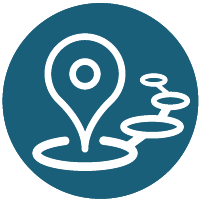New National Cybersecurity Standards Demand Greater Leadership, Governance, Culture, Change, and Transformation
,
Grand Hyatt - Bowie ABC
Session description
Outline
1. Introduction and Session Overview (10 minutes)
Content: Brief introduction to the presenters, session goals, and importance of the new national cybersecurity standards for K-12 districts.
Engagement: Use a quick polling tool to gauge audience familiarity with cybersecurity standards. Ask participants to reflect on current challenges in their district regarding leadership and cybersecurity.
Process: Audience polls, reflection prompts via chat or verbal engagement.
2. Understanding the New Cybersecurity Standards (10 minutes)
Content: Present an overview of the new national cybersecurity standards, focusing on the shift from technical management to district leadership responsibility.
Engagement: Interactive discussion where participants share their districts' current cybersecurity policies. Encourage questions via a Q&A platform.
Process: Q&A, peer-to-peer interaction via chat, polls to identify gaps in district knowledge.
3. Developing a Risk Management Strategy (10 minutes)
Content: Break down how to develop a cybersecurity risk management strategy, including communication across the district and supply chain risk management.
Engagement: Case study review—participants will analyze a brief scenario involving a school district facing cybersecurity risks and propose solutions using the standards.
Process: Group discussion (breakout rooms or groups), case study analysis, peer-to-peer sharing of ideas.
4. Establishing Clear Roles and Policies (8 minutes)
Content: Focus on the importance of defining roles, responsibilities, and policies to foster accountability and continuous improvement.
Engagement: Participants will complete a guided worksheet identifying key roles within their district and drafting sample policies.
Process: Guided activity, small group sharing of outcomes.
5. Creating Measurable Metrics and Strategic Vision (7 minutes)
Content: Teach participants how to develop measurable cybersecurity metrics that align with district goals, and create a strategic vision for transformation.
Engagement: Participants will brainstorm cybersecurity metrics they could implement and share their top ideas via chat or group discussion.
Process: Group brainstorming, peer feedback on metric ideas.
6. Conclusion and Key Takeaways (10 minutes)
Content: Recap of the session's key points. Provide resources, frameworks, and next steps for participants to take back to their districts.
Engagement: Use a final interactive poll to assess participant understanding and ask for one action they will take based on the session.
Process: Polling tool, commitment sharing.
Engagement Summary:
Polling Tools: Used at the beginning and end for engagement and feedback.
Q&A: Throughout the session to connect directly with audience questions.
Peer-to-Peer Interaction: Breakout discussions, case study analysis, group brainstorming.
Device-Based Activities: Guided worksheet on roles and policy development.
Supporting research
National Institute of Standards and Technology (NIST) Cybersecurity Framework
NIST's widely adopted framework provides the foundation for the national cybersecurity standards and best practices in managing and reducing cybersecurity risks.
Website: NIST Cybersecurity Framework
Cybersecurity Coalition for Education - https://www.nist.gov/cyberframework
This organization provides specific resources, frameworks, and a rubric designed for K-12 education to improve cybersecurity governance and strategic planning.
Website: Cybersecurity Coalition
Center for Internet Security (CIS) Controls for K-12 Cybersecurity - https://cybersecuritycoalition.org/
This site offers a rubric designed specifically for education systems to evaluate and improve their cybersecurity governance and practices.
Website: Cybersecurity Rubric
Recognized Expert: Dr. Susan Bearden
A leading expert in K-12 cybersecurity and data privacy, Dr. Bearden has contributed significantly to the discourse on education technology leadership.
Book: "Digital Citizenship: A Community-Based Approach" (Bearden, 2016)
Presenters


Session specifications
Topic:
Audience:
Attendee devices:
Attendee device specification:
Tablet: Android, iOS, Windows
ISTE Standards:
Change Agent
- Create a shared vision and culture for using technology to learn and accelerate transformation through the coaching process.
Systems Designer
- Guide teams to establish equitable technology policies that support effective learning.
- Ensure that resources and infrastructure for supporting effective use of technology for learning are sufficient and scalable to meet future demand.

 Back
Back Trips and Tours
Trips and Tours